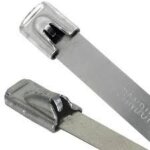The Role of Cable Ties in Space Exploration: Securing Equipment in Zero Gravity
Cable ties are essential in space exploration, securing equipment in zero gravity environments. Explore how these simple yet vital tools contribute to the success of space missions, from Mars rovers to the International Space Station.
Cable ties, seemingly simple devices, play a crucial role in space exploration. They secure equipment in the challenging environment of zero gravity. Let's explore how these unassuming fasteners contribute to the success of space missions.
Cable Ties in Space: More Than Just Plastic Strips
NASA and other space agencies rely on specialized zip ties for their missions. These aren't your average hardware store varieties. Space-grade zip ties are designed to withstand extreme conditions:
- They resist radiation and UV exposure
- They maintain integrity in extreme temperature fluctuations
- They're made from materials that don't outgas in vacuum environments
Securing Vital Equipment
In zero gravity, even small items can become dangerous projectiles. Cable ties help by:
- Fastening interior and exterior conduits on spacecraft and rovers
- Securing research and lab equipment to prevent floating
- Organizing cables to maintain clear pathways for astronauts
Adapting to Extreme Environments

Space-grade cable ties are made from special materials like ETFE (ethylene-tetrafluoroethylene). This material can withstand:
- Temperatures ranging from extreme cold to intense heat
- Exposure to 2,000 times more radiation than standard nylon ties
- The corrosive effects of space environments
These properties ensure the ties remain functional throughout long-duration missions.
From Earth to Mars
Cable ties have been used on multiple Mars rovers. They're currently in use on:
- The still-active Curiosity rover
- The recently landed Perseverance rover
They were also used on the twin Spirit and Opportunity rovers
Versatility in Space Applications
Cable ties in space aren't just for bundling wires. They serve various purposes:
- Creating temporary repairs during spacewalks
- Securing items during launch and landing
- Organizing equipment in cramped spacecraft interiors
Their simplicity and reliability make them invaluable tools for astronauts.
Innovations in Space-Grade Zip Ties
As space exploration advances, so do cable tie technologies. Recent innovations include:
- Color-coding for easy identification of different systems
- Ties with built-in RFID tags for inventory management
- Reusable ties for temporary applications during missions
These advancements enhance efficiency and safety in space operations.
The Importance of Simplicity
While spacecraft use cutting-edge technology, simple solutions like cable ties remain crucial. They offer:
- Reliability in critical situations
- Ease of use for astronauts in bulky spacesuits
- Versatility for unforeseen challenges during missions
Sometimes, the simplest solutions are the most effective, even in high-tech environments.
Environmental Considerations
While cable ties are essential, space agencies are mindful of space debris. Efforts are made to:
- Ensure ties don't detach and become orbital debris
- Develop biodegradable options for future missions
- Implement proper disposal methods for used ties
Responsible use of cable ties aligns with broader space sustainability goals.
Future of Cable Ties in Space Exploration
As we look to deeper space exploration, zip ties will continue to evolve. Future developments may include:
- Smart ties with embedded sensors for real-time monitoring
- Self-healing materials for extended durability in space
- 3D-printable ties for on-demand manufacturing during long missions
These advancements will support more ambitious space exploration goals.
Conclusion
Cable ties, despite their simplicity, are indispensable in space exploration. They secure vital equipment, adapt to extreme environments, and provide reliable solutions in zero gravity. From Mars rovers to the International Space Station, these humble fasteners play a crucial role in humanity's journey to the stars.
As we continue to push the boundaries of space exploration, it's clear that both high-tech innovations and simple, reliable tools like zip ties will be essential. They remind us that in the complex world of space technology, sometimes the most unassuming components can make the biggest difference.

